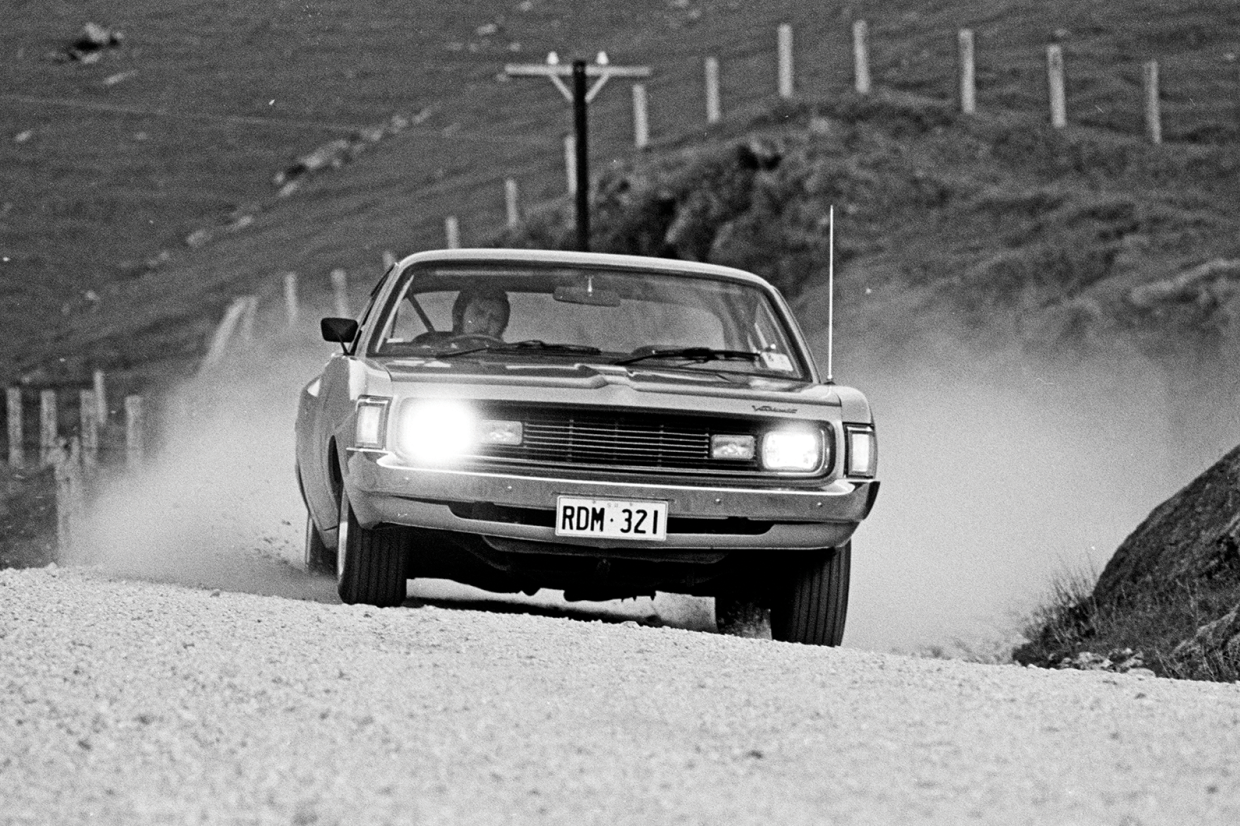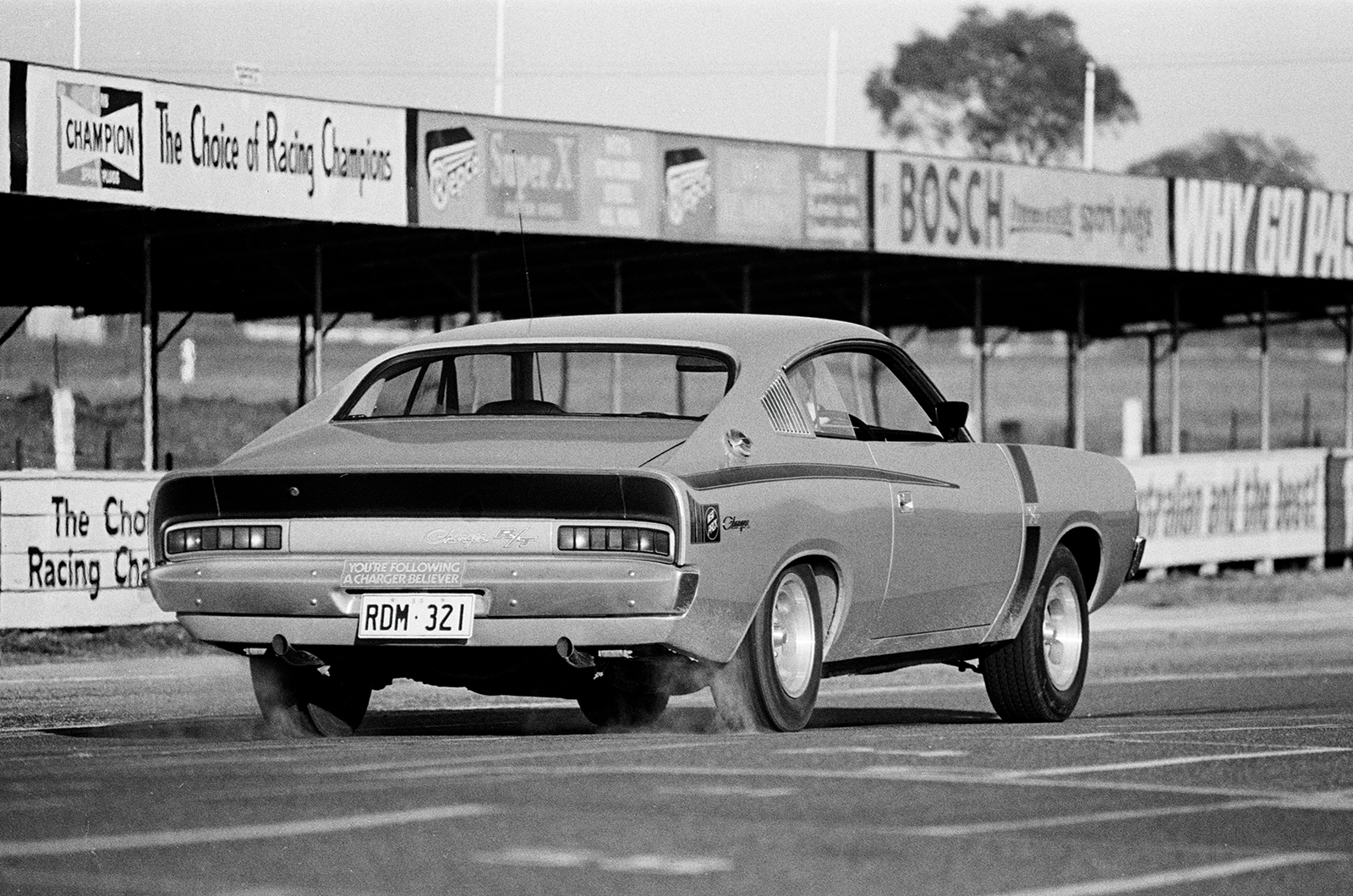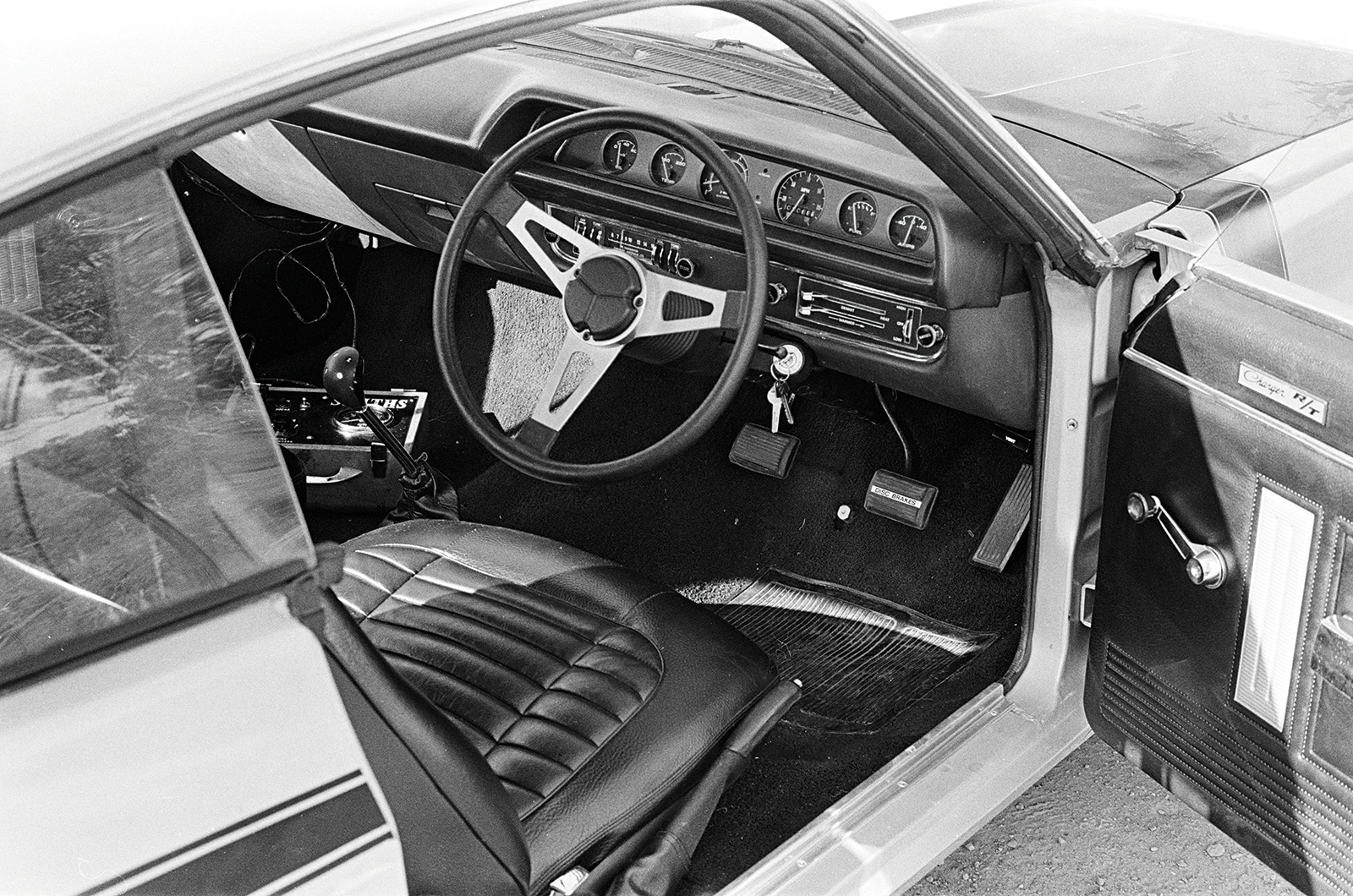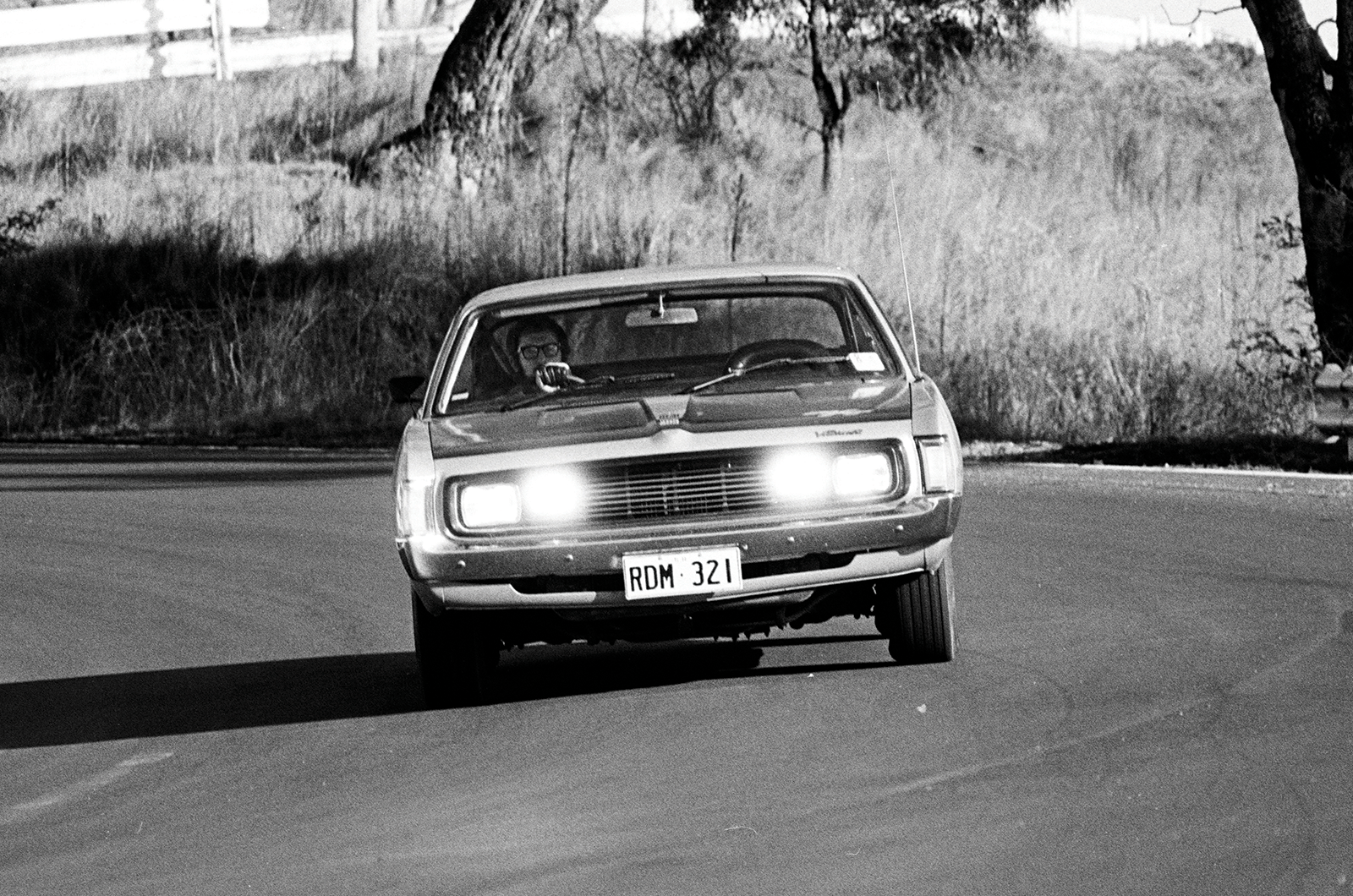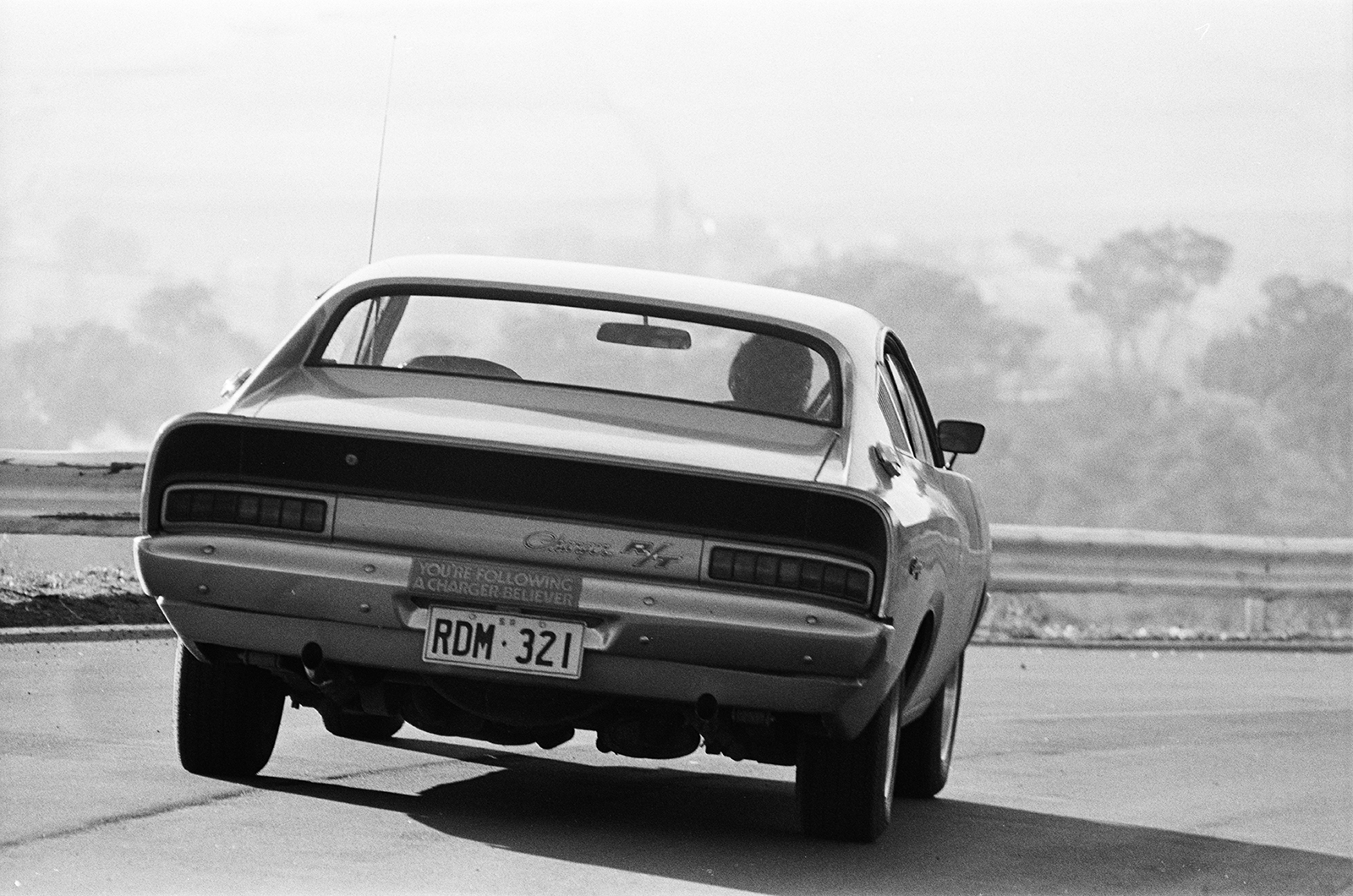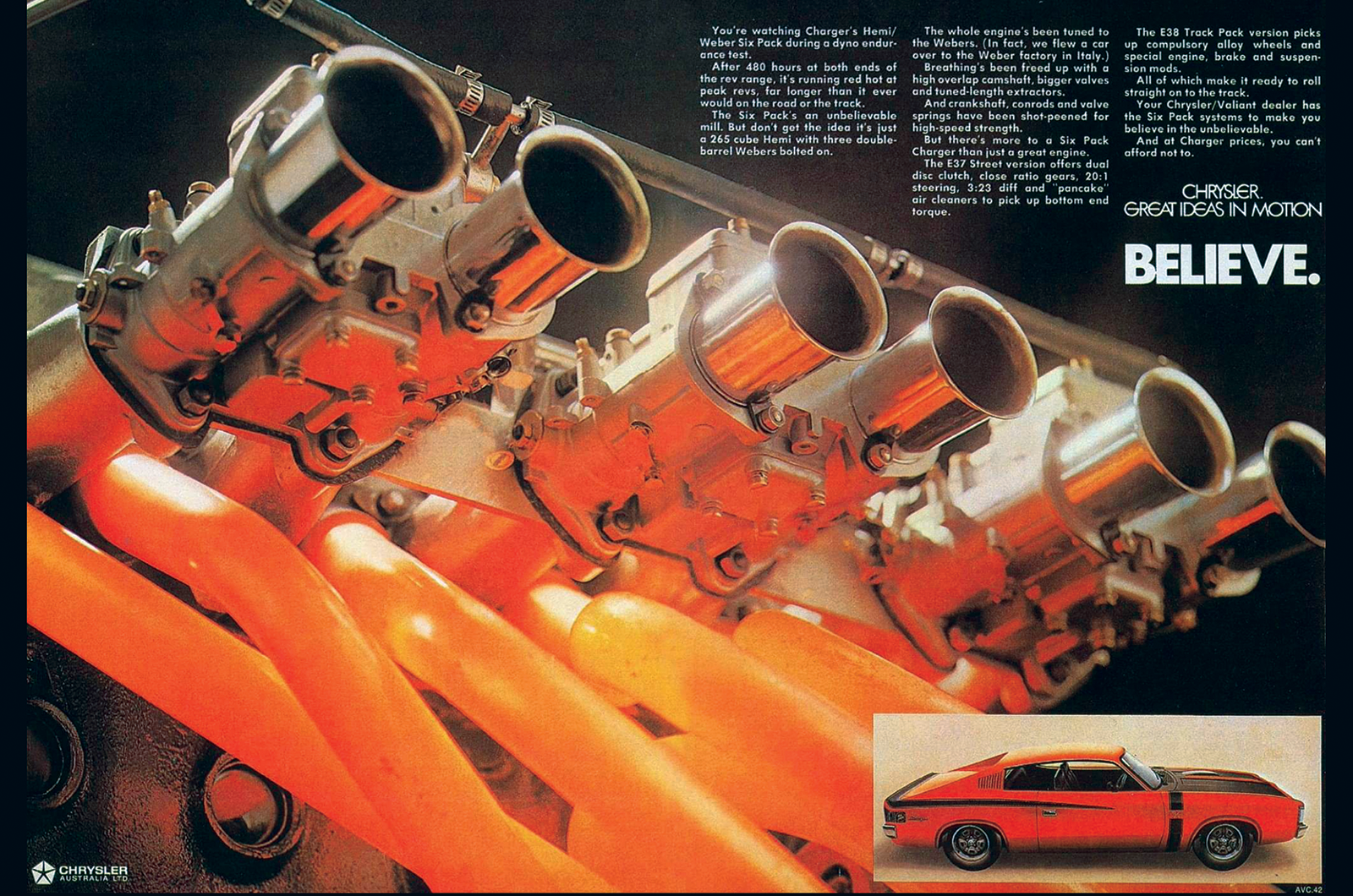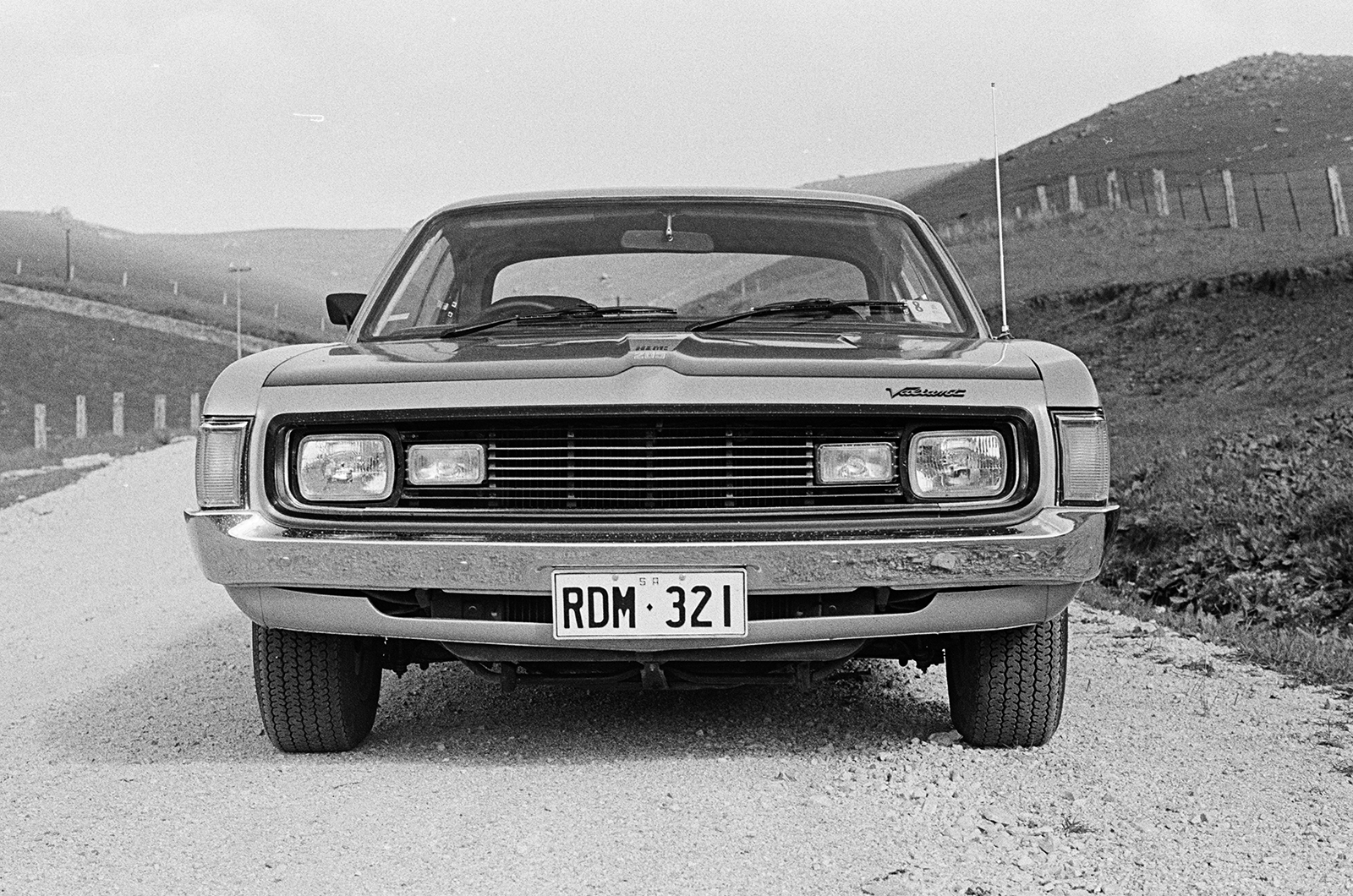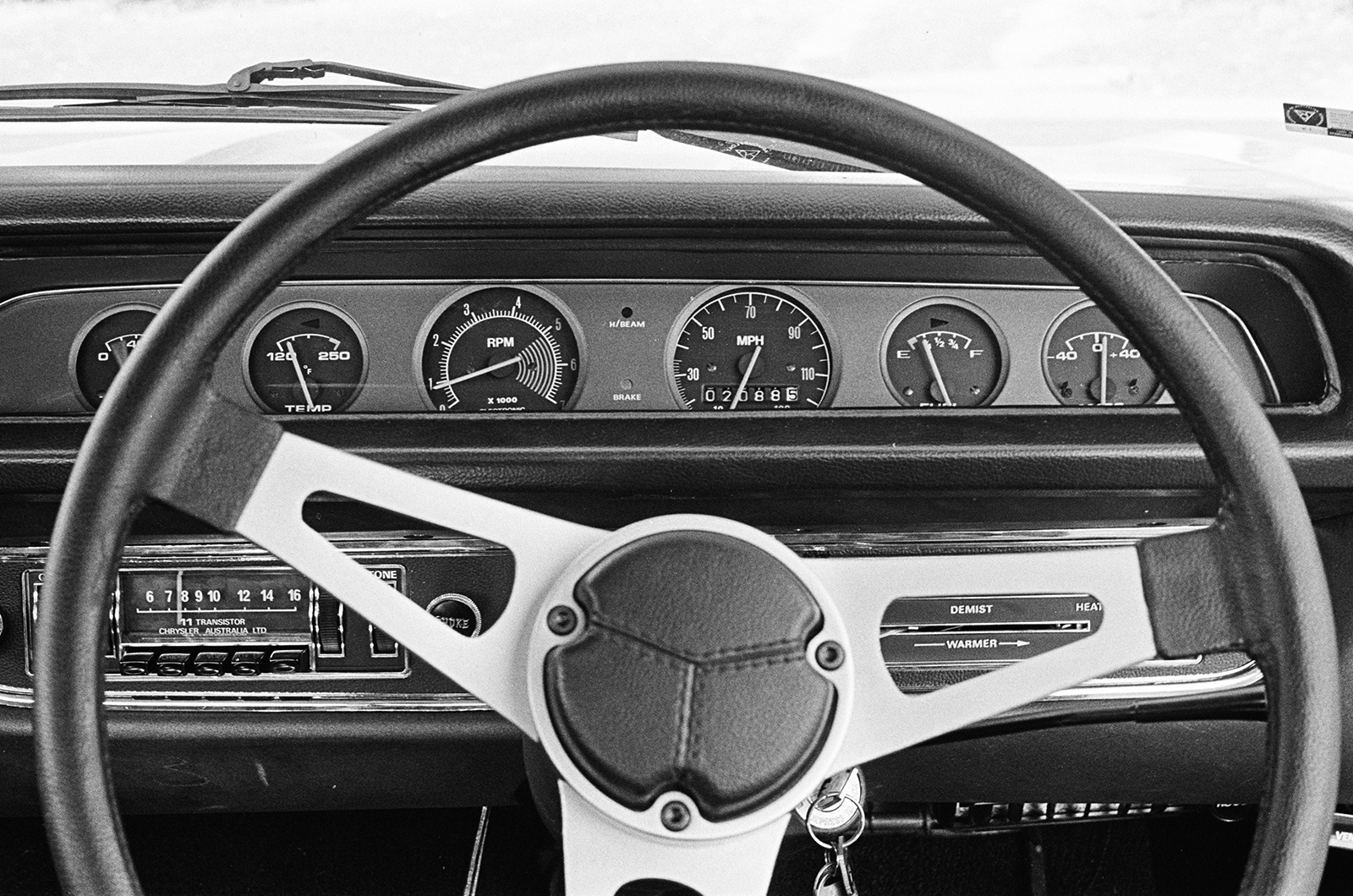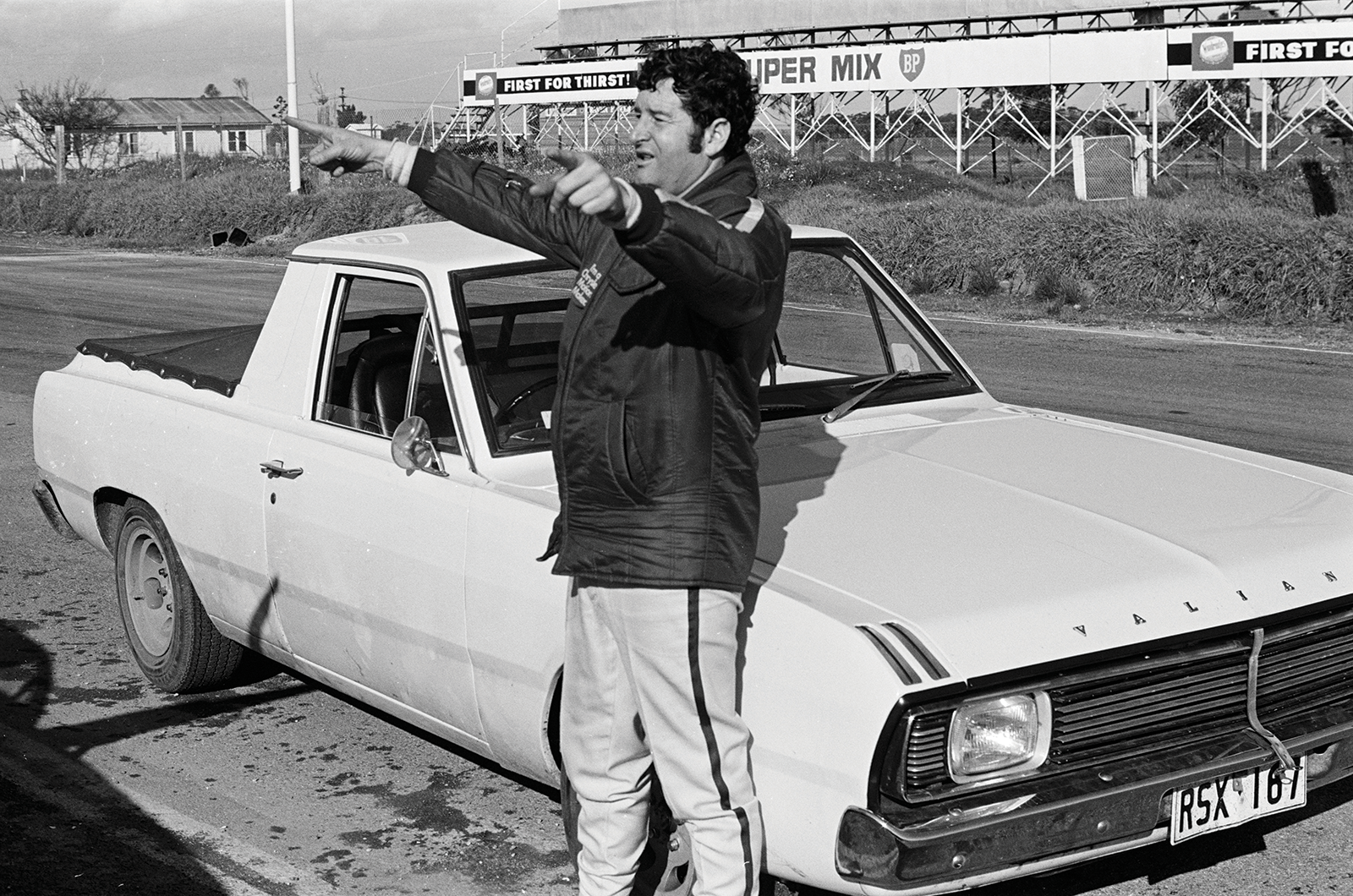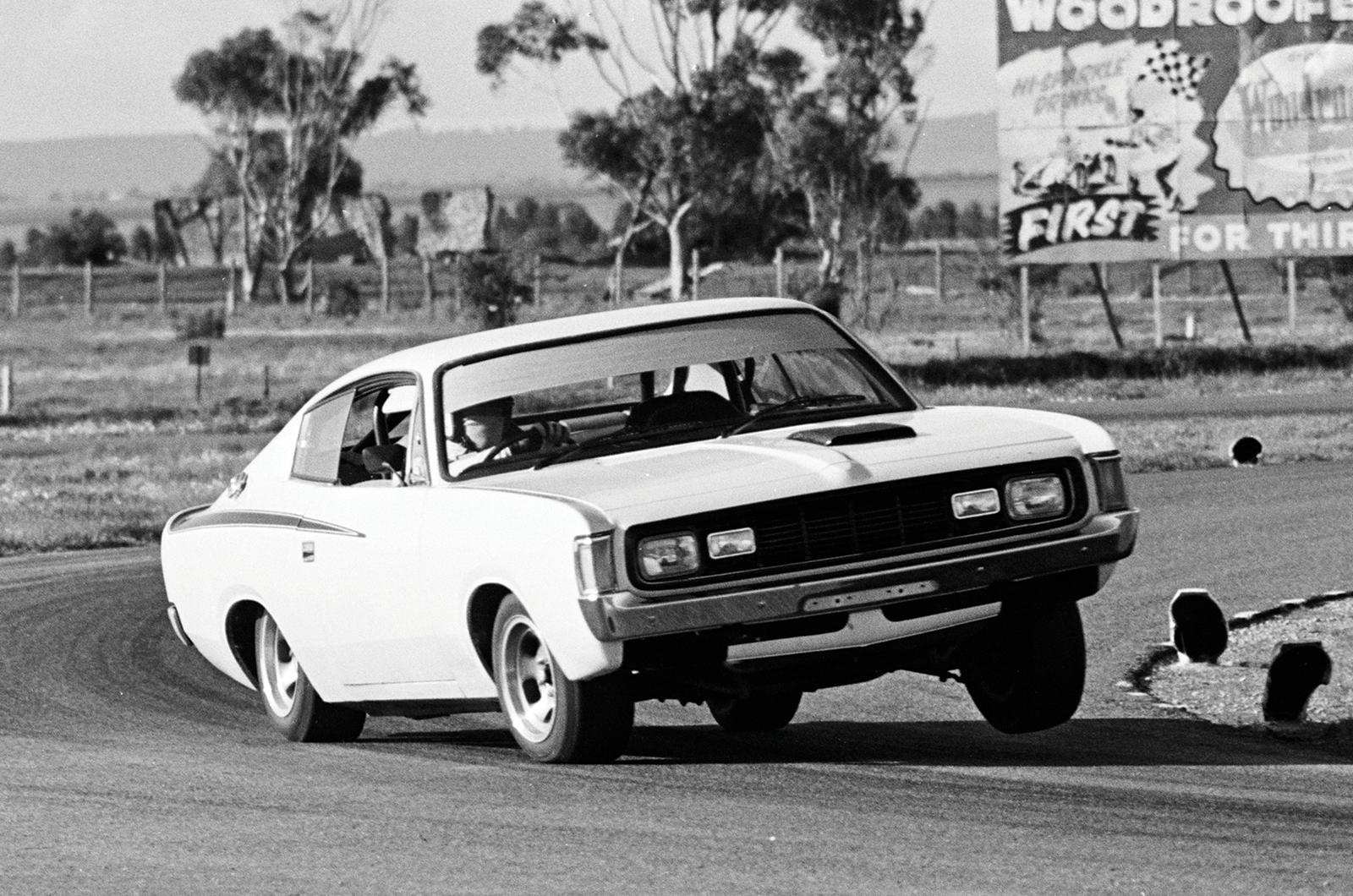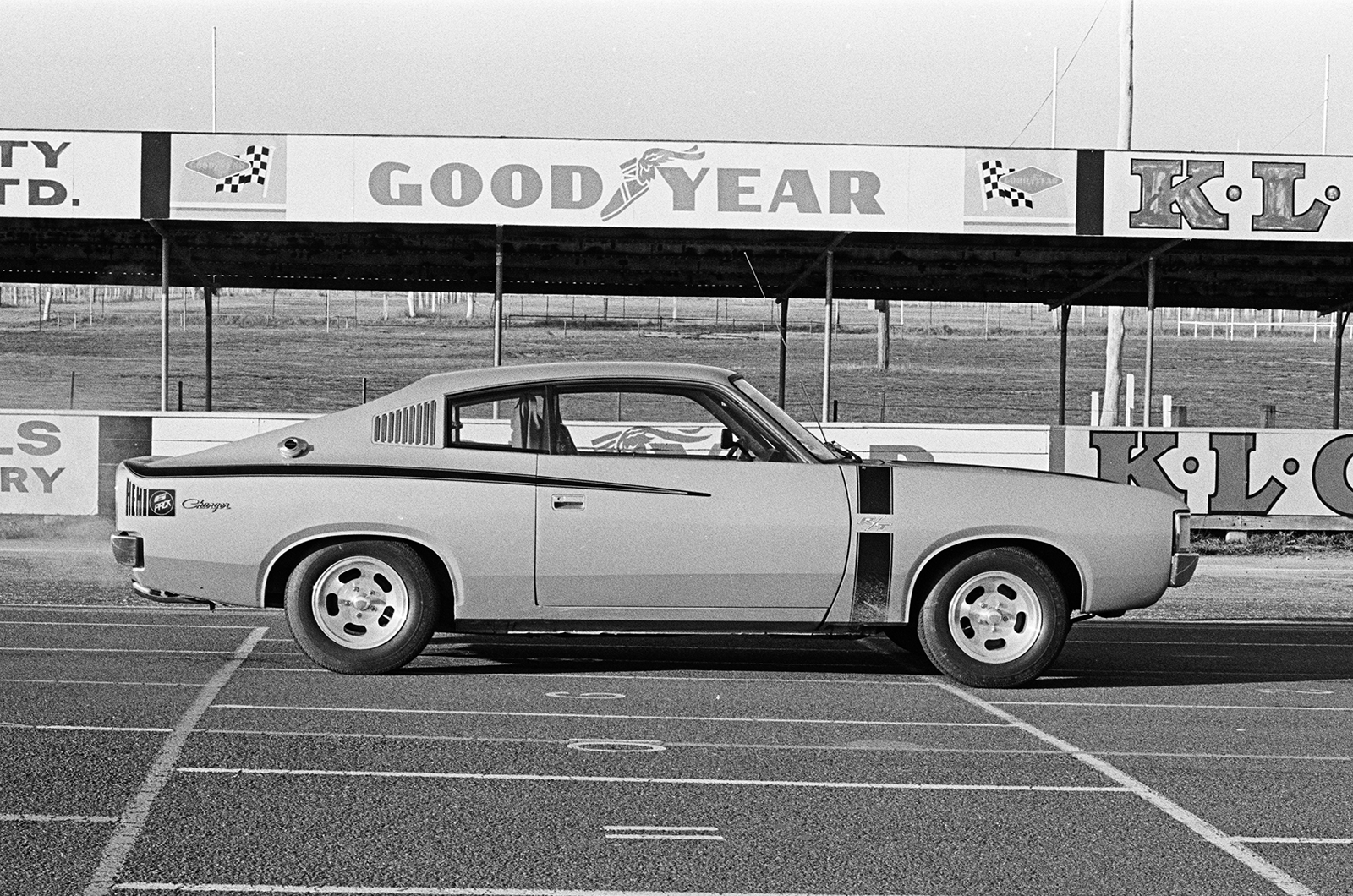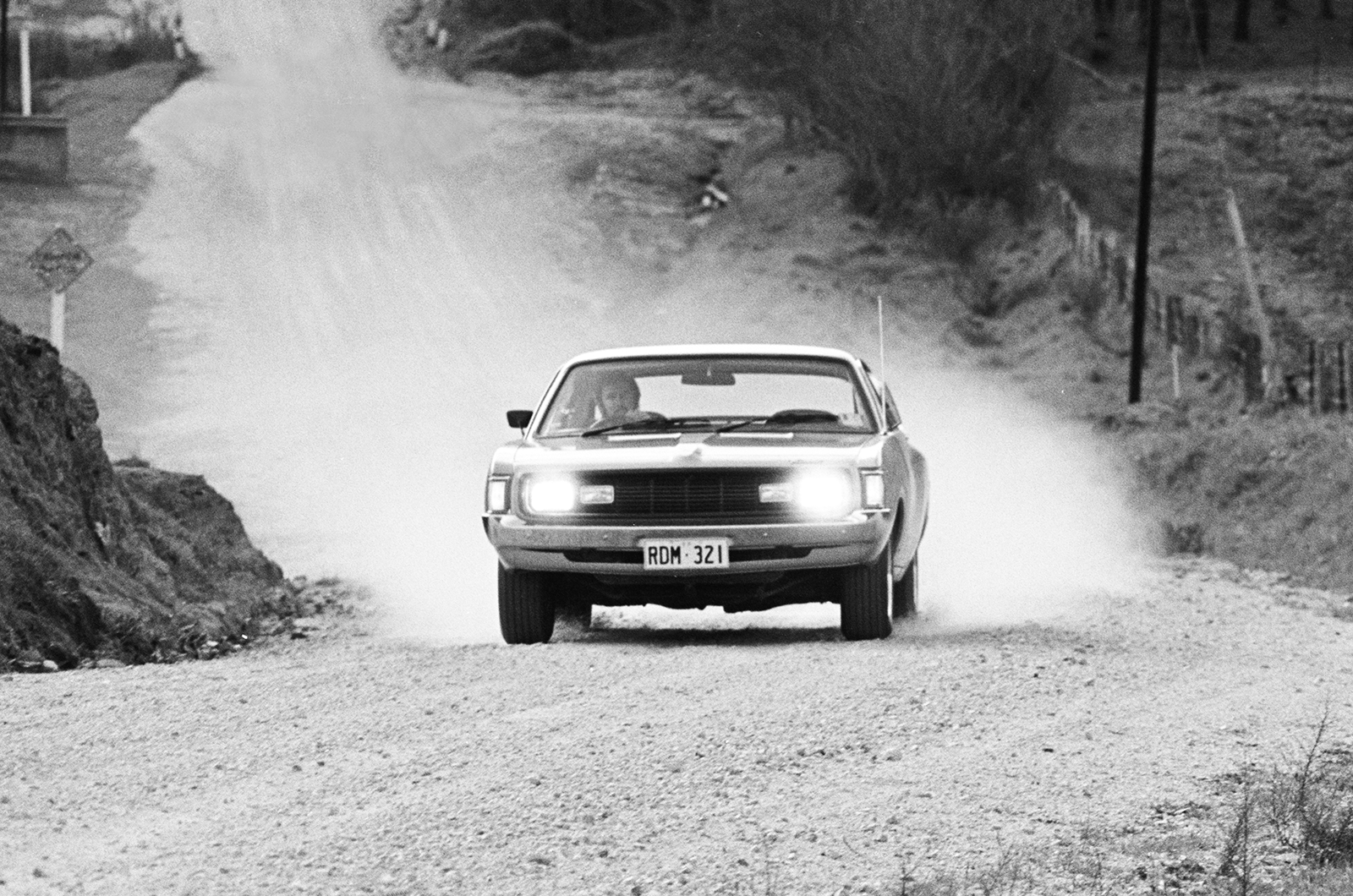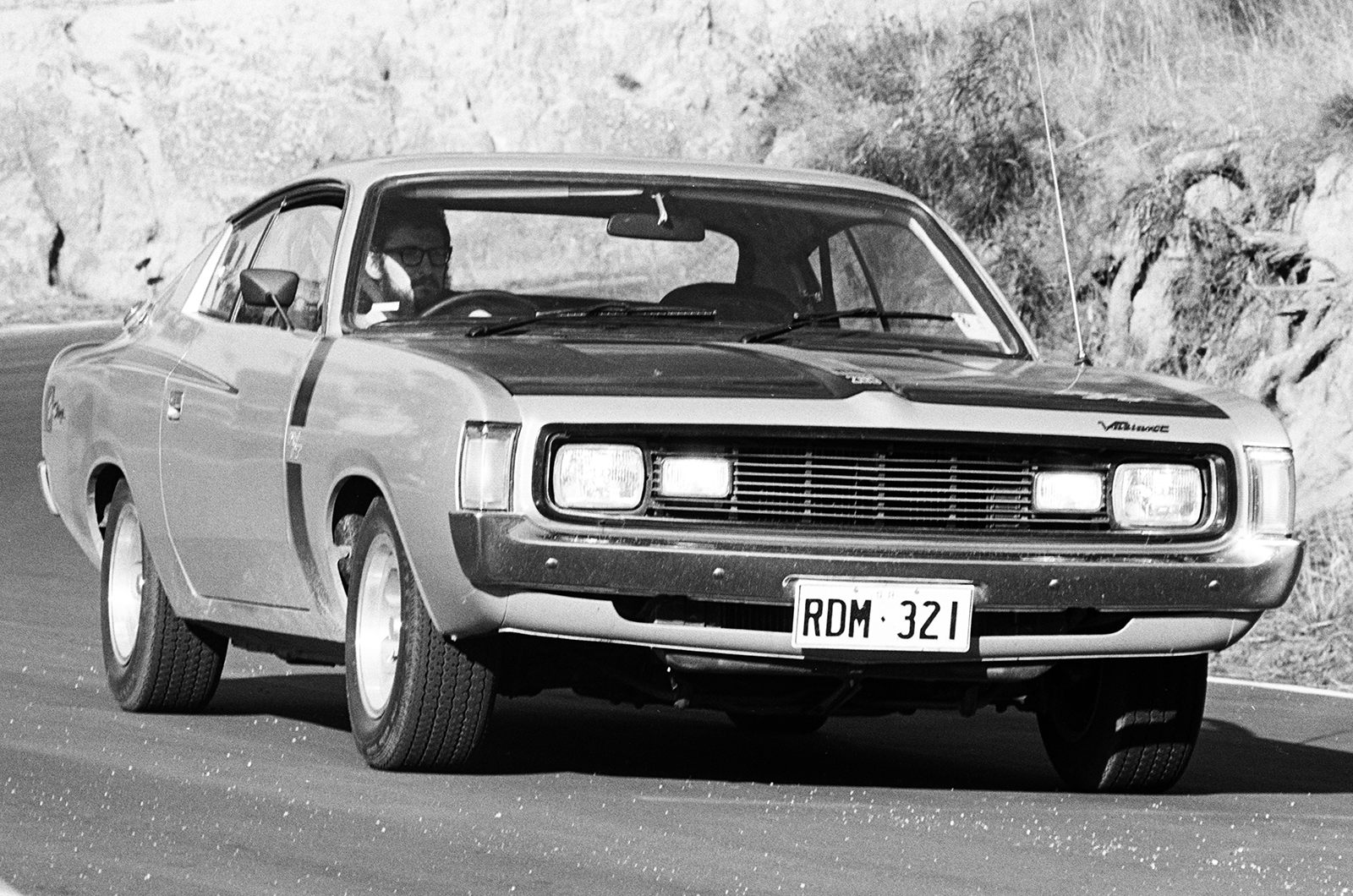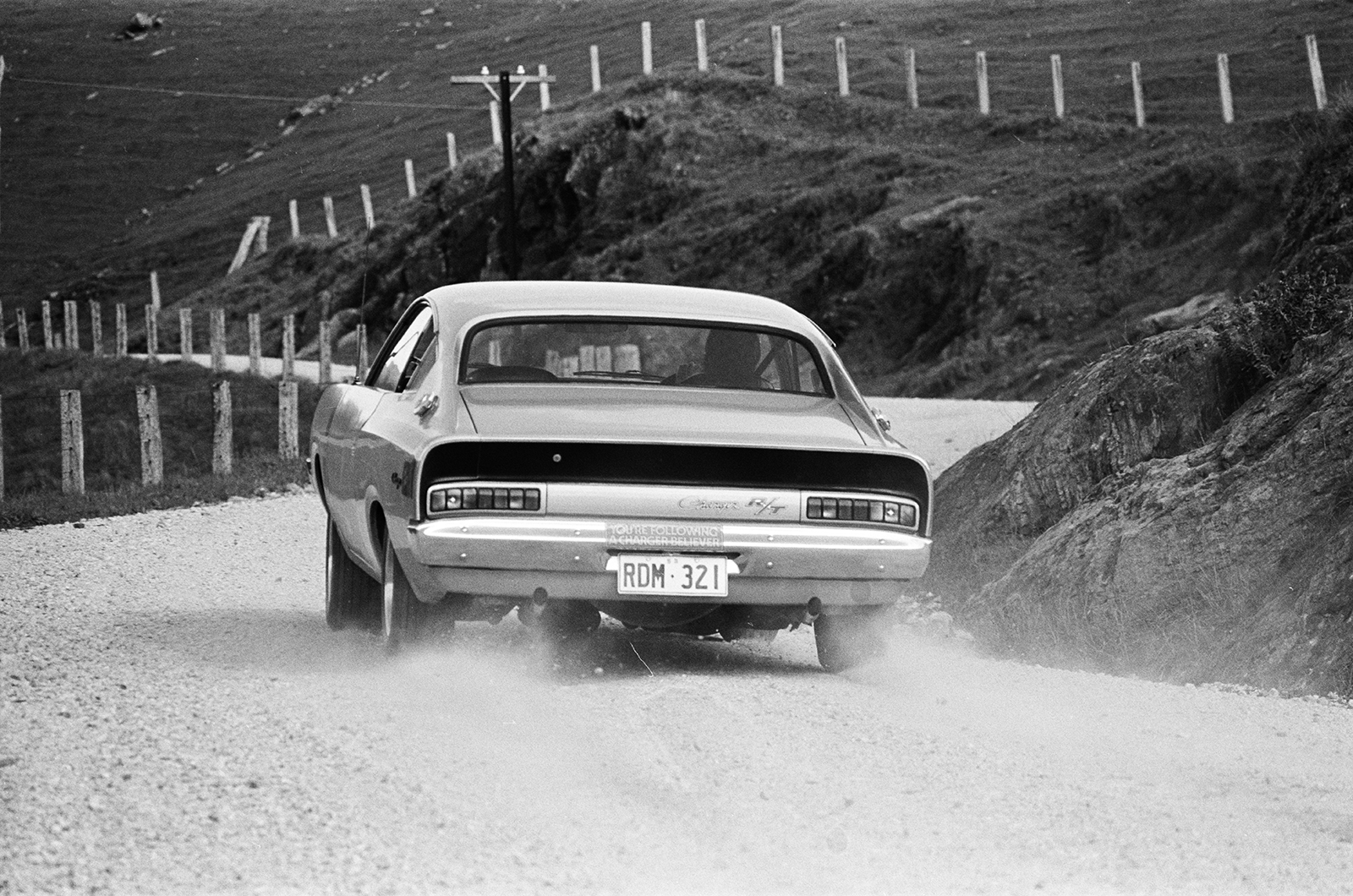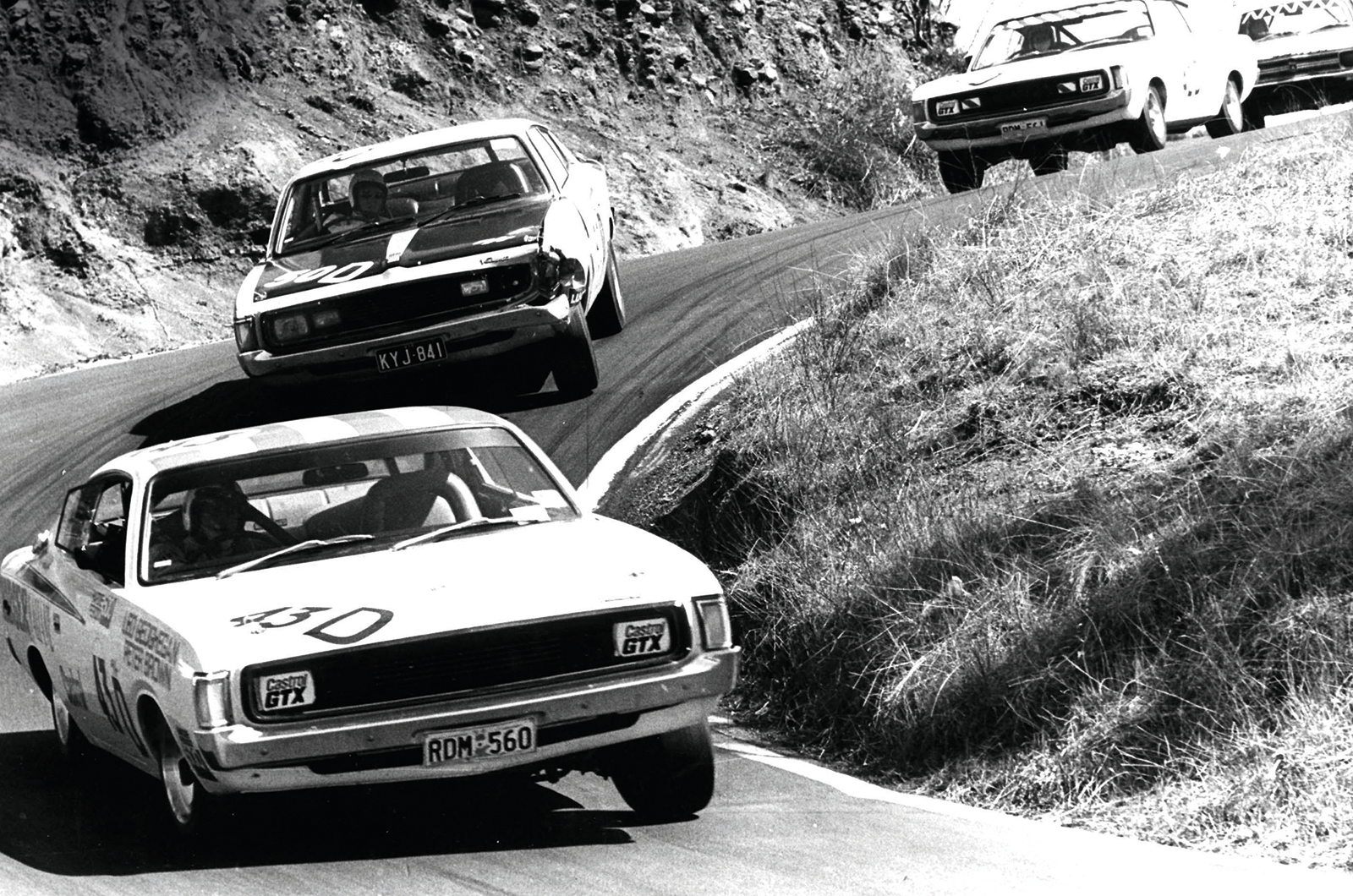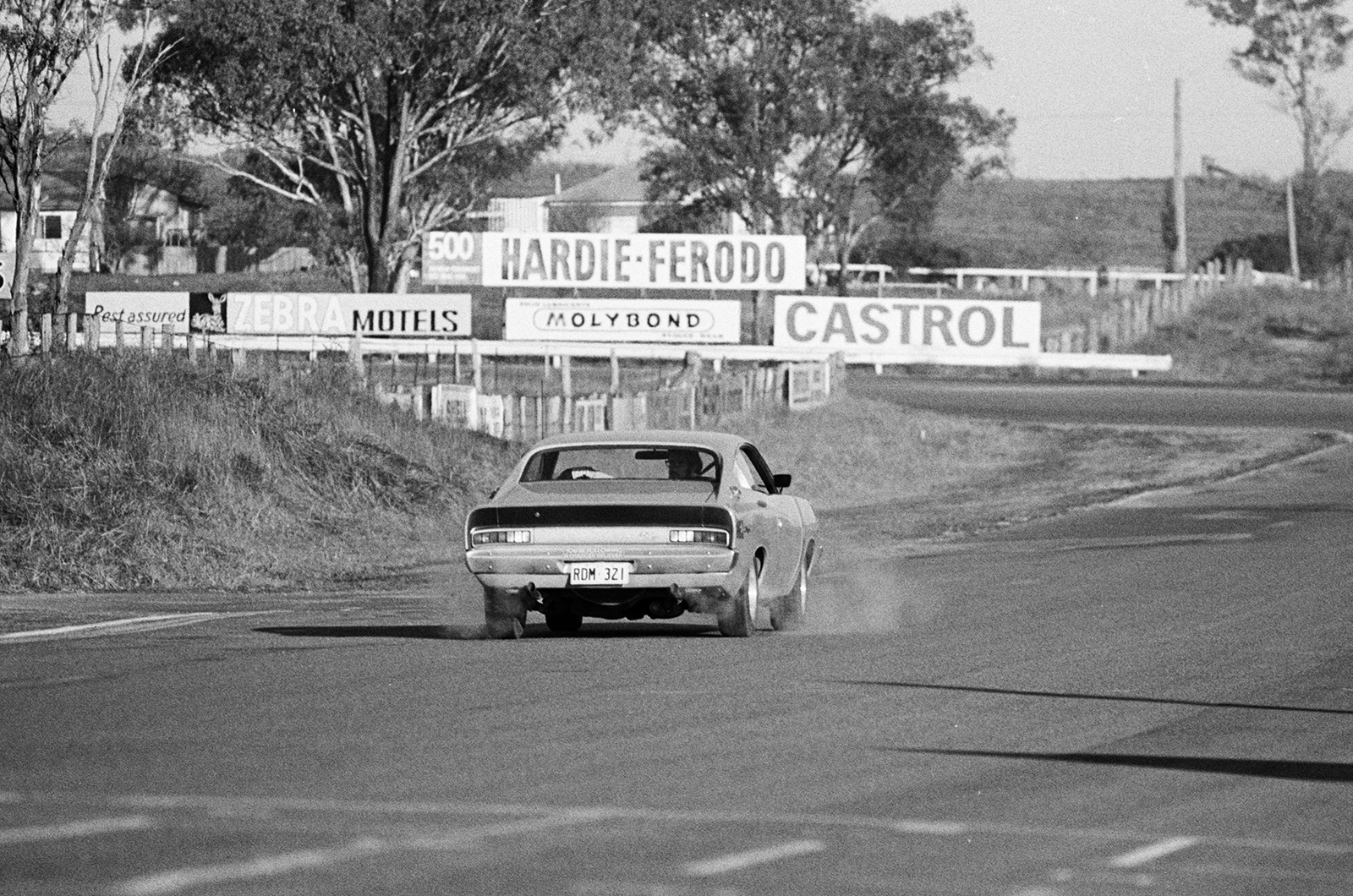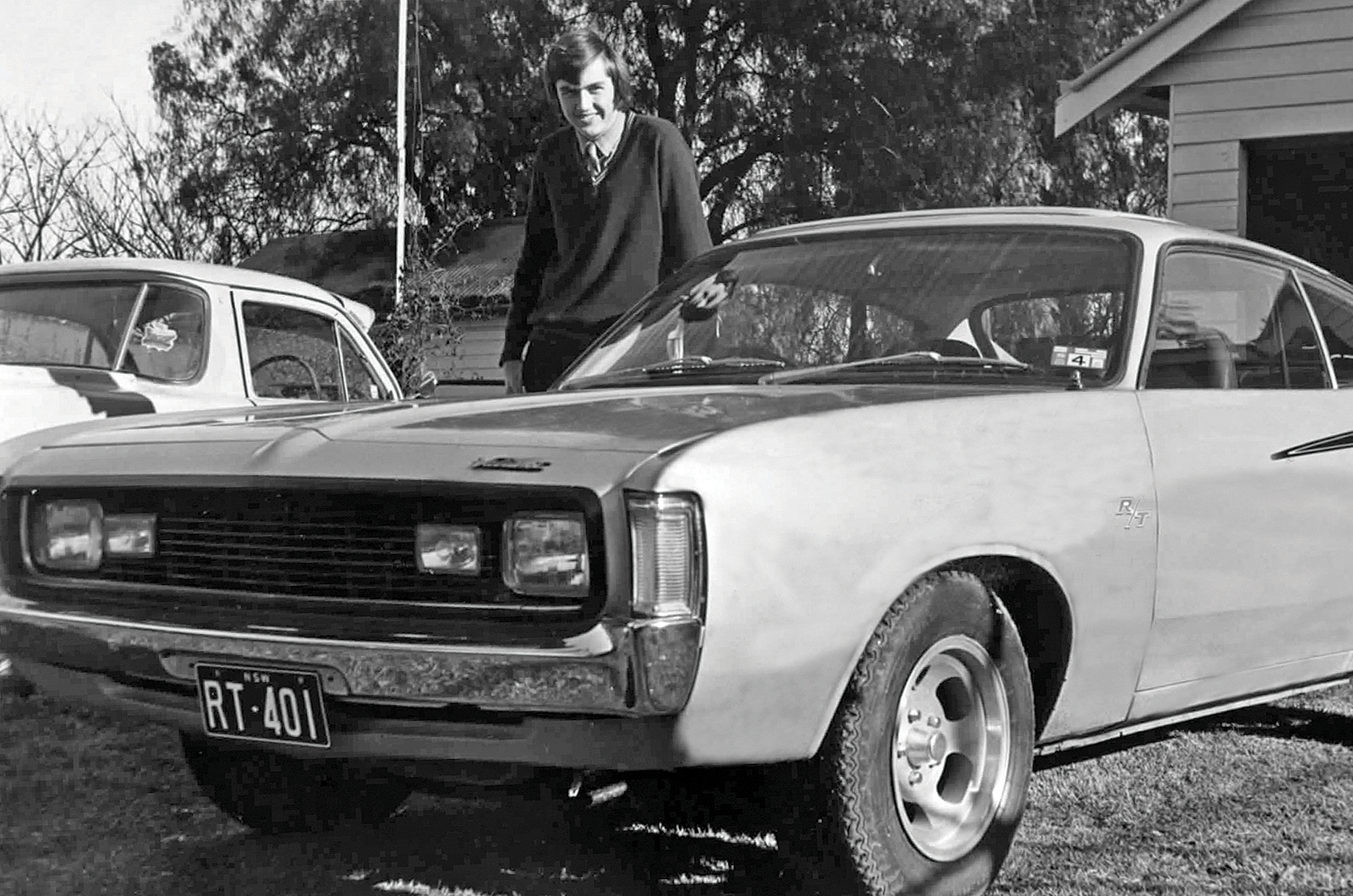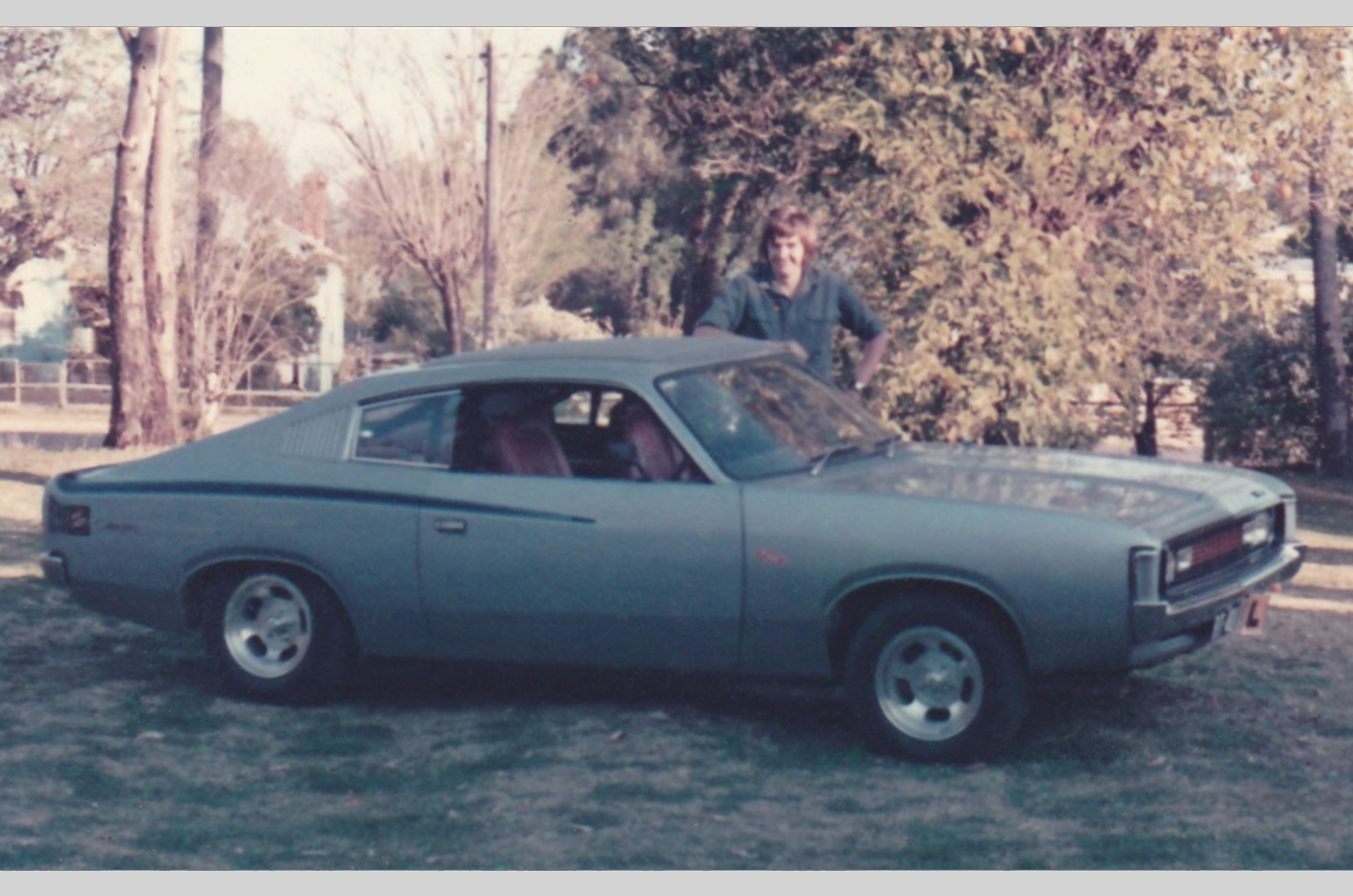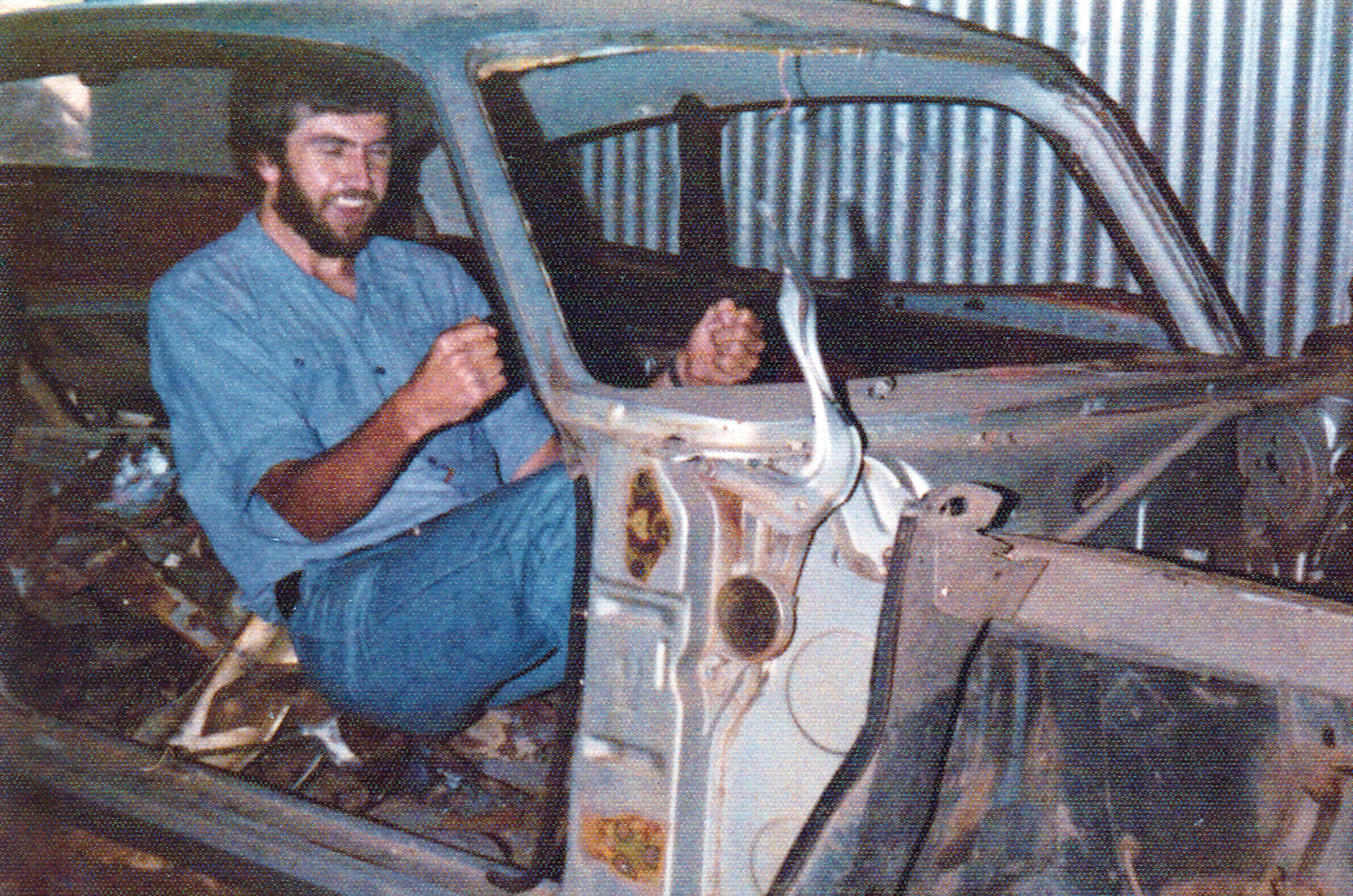“If the back end stepped out over bumps you could steer on the throttle, adjusting the car’s attitude, feeding in the power to cancel any tendency to understeer.
“We didn’t care that the E38 was crude. To drive the Charger was to understand how an inert mechanical object can connect with a human.”
The Chrysler kicks up dust on the dirt tracks
As we rolled into Bathurst we couldn’t resist turning off to the Mount Panorama circuit that climbs into then plunges out of the hills above town.
We were on the mountain top as dawn broke and paused to look down over the famous roads that had hosted so many monumental races.
We eased down through The Esses and on through The Dipper to Conrod Straight. It didn’t take much to imagine a race-prepared Charger winding up to 140mph down there.
Then we nipped out on to a nearby dirt road and found the Charger was sure-footed there, too.
We had 120 miles and couple of hours left to go to Sydney. You can choose between two main routes through the Blue Mountains to the coast.
In the Charger, we picked the less-used, sinuous and wonderful Bells Line of Road, which follows an ancient Aboriginal pathway and is so steep in parts that few cars had the power to climb it before WW2.
‘At Bathurst Leo brought the E38 home in seventh; with decent brakes he could have stopped for lunch and still won’
Then a glorious dash down into the Sydney suburbs before entering the office about the time everyone else was arriving.
Despite the Charger’s pace across the plains and through the hills, the time we’d spent taking figures, sorting the fanbelt and enjoying our couple of tours of Mount Panorama meant the trip had taken nearly 17 hours.
We’d averaged 13.6mpg but the 35-gallon tank – de rigueur for a Bathurst contender – required only one refill.
We’d arranged to hang on to the Charger for a while then give it away in a contest.
It went to lucky Wheels reader John Ollivier, a teenage boy in a tiny NSW country town (see below).
Shortly after our trip, an E38 driven by Doug Chivas won its debut race at Oran Park.
But in the big one, the 500-mile race at Bathurst a few weeks later, the Chargers turned out to be 6 secs slower than the dominant Ford Falcon GT-HOs.
‘This wondrous bellow was a rip-snorting, Weber-fed “six” singing through twin pipes. It sounded better than a Ferrari’
Brakes were the issue, said Geoghegan, who brought the first E38 home seventh.
The discs, specced to meet local content rules, had two-piston calipers, not the four that were clearly needed.
Leo reckoned that with decent brakes he could have stopped for lunch and still won.
The E49 Charger that followed in 1972, with 302bhp and a smoother-shifting four-speed, was a nicer, faster car – quicker even than the revered Falcon GT-HO Phase III.
Yet, with the brakes still not top-notch, at Bathurst that year E49s came third and fourth behind a GT-HO in a wet race won by Peter Brock in another, lighter six-cylinder car, the Holden Torana GTR XU-1.
But there was something about the raw spirit and charisma of that hastily created E38 and its sublime Six Pack.
The drive it gave us across the plains and mountains of eastern Australia etched it deeply into our affections.
Words and images: Mel Nichols
School-run supercar
In 1972, magazine reader John Ollivier won the Charger in a competition
John Ollivier, now a retired mechanical engineer, was the lucky schoolboy who won the Wheels Charger E38 in 1972. “I was a 16-year-old petrolhead in Narrabri, a small town 360 miles north-west of Sydney,” he recalls.
“I think Peter Robinson and the Chrysler PR man were nervous about giving such a fast car to a schoolboy, but Dad told them I’d been driving for years on local farms.
“I had to wait four months to get my licence. On the big day I drove with Mum to the police station.
“The young copper on the desk asked if that was my Charger outside.
“Sergeant Carpenter came over and declared that he would conduct this test.
“We drove out a few miles, then back into town and parked outside the post office.
“For half an hour he leant on the Charger talking to the locals.
“Back at the station he told the young copper to write out my licence without further ado.”
John used the Charger for more adventures in Australia
“The Charger absolutely ate the miles on long trips,” he continues.
“The only trouble was filling it so I worked part time at a local garage, which also got me free servicing for it.
“Mum took a shine to it, driving it around town with the sunroof open.
“I wasn’t amused when I got home from school one day to learn that she’d driven some friends out of town and wound it up to over 100mph.
“After a couple of weeks’ cruising the plugs would foul up, so it was either pull them out and clean them, or take the car out of town and hold it flat in second.
“At 60mph the engine would miss and buck, but by 75mph the plugs would clear, the engine would fly around to the redline and she was right for another week.
“We did have to take it to Sydney every year for a dyno tune.
“One Friday night I did the 360-mile trip home in five hours; I averaged 72mph including stopping for fuel.”
John sits in what was left of the Charger
“I kept the E38 spotless, including the engine,” John remembers.
“It never missed a beat and started first time if you followed the sequence: one throttle pump then a third throttle before turning it over.
“At 70,000 miles the compression was still high, but just before Christmas ’76 an elderly woman darted out to pass a tractor coming towards me on a country road.
“She swerved across on to the dirt verge on my left side then swerved back, hit the Charger’s front left and pushed us into the tractor. The E38 was totalled.
“The police charged her with driving without due care and cancelled her licence.
“She wasn’t insured and my cover was for a standard Charger’s value, so I only got $1000 plus the wreck back.
“I sold the engine for $1000. [In top condition, the E38 would now be worth around £110,000.]
“I still remember the day I got the phone call about winning the Charger – it’s etched into my brain.
“It was a source of joy and pride, and I still miss it to this day.”
Enjoy more of the world’s best classic car content every month when you subscribe to C&SC – get our latest deals here
READ MORE
Heavy metal thunder: Chevrolet Chevelle, Pontiac GTO, Plymouth SuperBird, Dodge Charger and Ford Torino
30 discontinued Chryslers
Ford Mustang Boss 302 vs Mach 1: two-trick ponies
